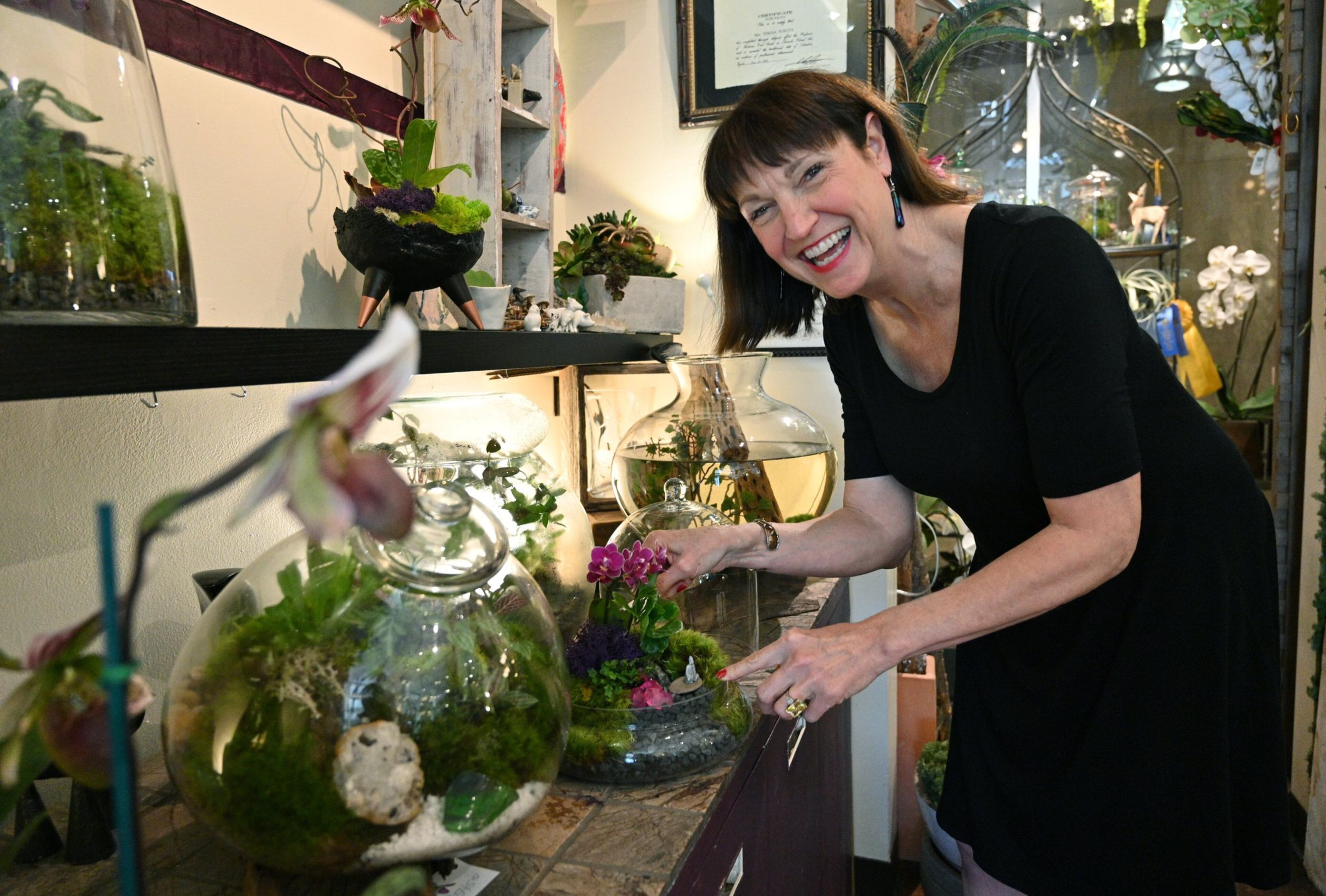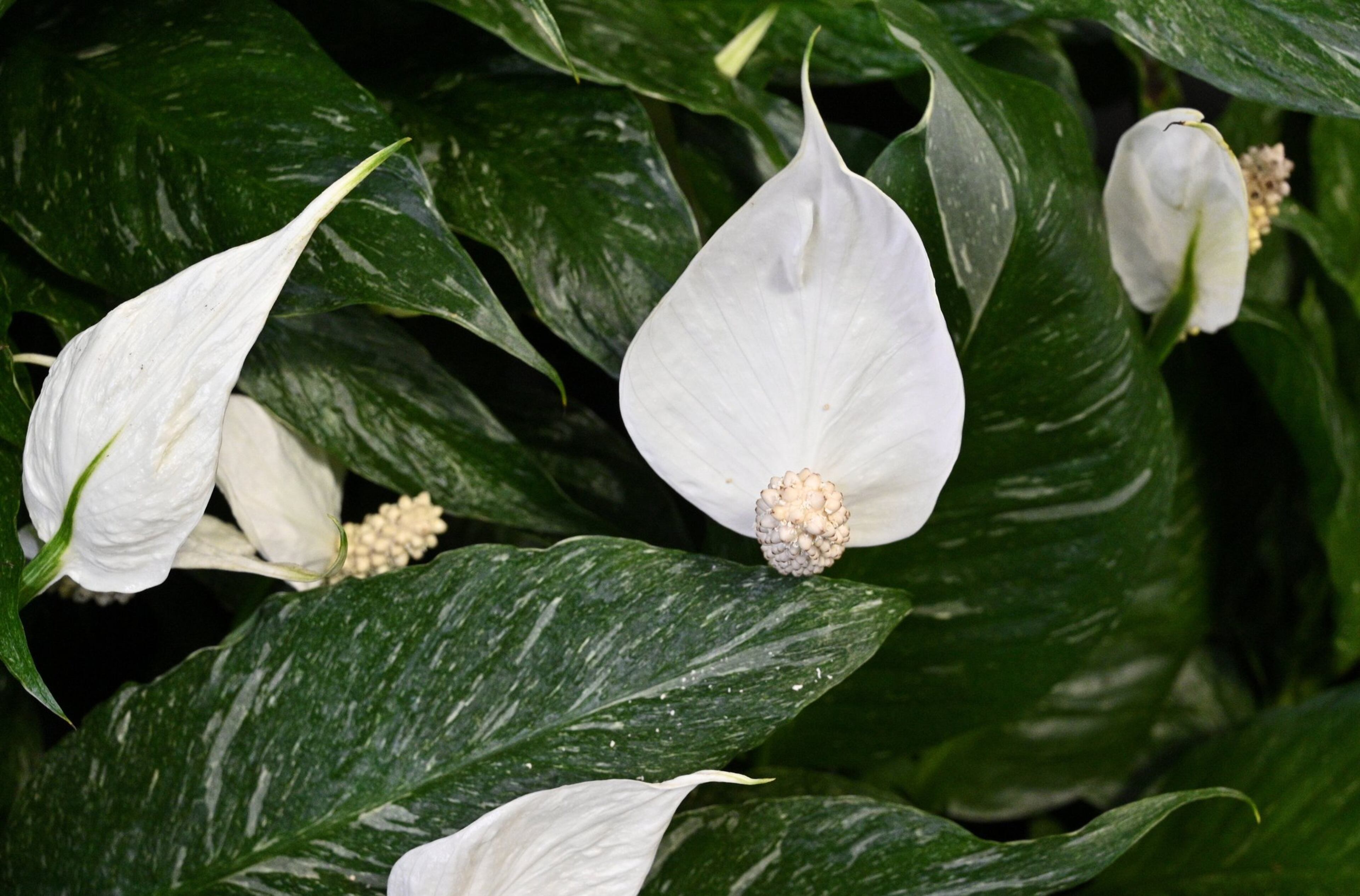Indoor gardening: 21 easy-to-care-for plants

It's fair to say hundreds of wannabe gardeners are flocking to hardware stores, nurseries and do-it-yourself warehouses to purchase flowers, shrubs and vegetables. Some will, in fact, discover a green thumb and subsequently be overwhelmed with squash and tomatoes, while others will curse the elements for their lack of success, blaming the weather, interfering animals or not enough space.
But there is a solution — indoor gardening. There are a variety of options to start your own greenhouse that will not only enhance your home decor but help purify your air.
"The key to an indoor garden is getting plants that are super easy and don't require much care," says Terry Furuta, owner of Terry Furuta Floral Designs in Buckhead. "There are some plants that can be tricky, like ferns. Some believe that orchids are difficult, but I love orchids, and if they're in the right location, it's easy."

To have success with your indoor greenhouse, the first step is to determine the amount of light and select plants that thrive in that environment, says Michael Chapman, a horticulturist with Pike Nurseries.
Be mindful of where the windows are, what direction they face and how far from the window the plant will be placed. Holley Beagle, nursery manager at Grant Park’s Garden*Hood, says a good way to figure out the light situation is to set up a blank piece of paper in the spot where you are planning to place the plant and hold your hand about a foot off of the paper during the brightest part of the day. If there is a clear shadow, that indicates a bright light; a fuzzy shadow means medium light; and no shadow equals no light. Rotate the plant every couple of weeks so it grows evenly rather than toward the light.
The thicker and greener the leaves, the less light they require, says Evelyn Willis, a designer with Willis Flowers in College Park. She’s a fan of the snake plant (also known as the mother-in-law’s tongue), which can be neglected for weeks, can survive in low levels of light and has few insect problems.

The next step is important because it is the major reason why plants die — overwatering. Plant soil should be checked weekly; put your hand slightly on the top of the soil, if it’s moist, don’t water. However, if it’s dry, give it a good soak, and leave it alone. It’s preferable to fully saturate the soil and allow it to dry out in between waterings.
“There are telltale signs you’ve watered too much,” Chapman says. “If the leaves are starting to wilt, cut back.” There are moisture meters that indicate the soil’s moisture level, and he advises only using self-watering plant orbs for vacations, not everyday use.
Another consideration is the container. Not only must it have good drainage (or rocks at the bottom), but it must be appropriate for the plant. “How much space do you have to utilize?” asks Beagle. “The plant will grow into the container. Don’t start with a large pot. Don’t go more than twice the size of the pot that it’s currently is in. A frequent mistake is that people put a smaller plant into a large container, and they run the risk of overwatering.”
Chapman recommends not repotting the plant until at least six months to eliminate stress. He agrees that upping the container size should be gradual. “If you go from a six-inch pot to a 12-inch, you will not be successful. It needs to get acclimated to the situation and humidity before transplanting.”
Regardless if the plants are needy or easy, all need fertilizing and may have an insect issue. Insects, partially little white bugs that look like cotton on the back of the plants, can be easily eliminated with organic sprays, neem oil or insecticidal soap.
As for fertilizing, Beagle recommends monthly feedings while Chapman prefers only a couple times a year, especially in the spring.
Another way to have an indoor greenhouse is one of Furuta’s specialty: a terrarium. She even gives classes on building a terrarium. “Terrariums require no maintenance, and they’re perfect for people who have other homes or travel a lot. You can leave them for months at a time, and they’ll take care of themselves. And, they’re fun to watch. They have their own ecosystems, and it rains inside because of the condensation.”

So, which plants are the easiest, and which are for the more experienced gardener? There seems to be a split on orchids. Furuta says they’re easy, while Willis and Monica Losick, a floral designer with the Flower Cottage on Main in East Point, consider them temperamental. “You either have luck with them or you don’t,” says Losick simply.
Not all people are fans of ferns, either, although they do tend to thrive in the bathroom. If you stress out a ficus tree, it will quickly drop its leaves. Losick says that succulents don’t require much water and flourish in small, compact indoor gardens. “They’re a little minimalistic and easy.”
All said that indoor plants are easy as long as you look for signs of overwatering or improper sunlight. “You’ll build a relationship over time with your plants,” says Chapman. “And, then all you have to do is look at it, and you’ll know what it needs.”
>> RELATED: Amid pandemic, interest in gardening surges across metro Atlanta
Terry Furuta’s indoor plant picks:
Sansevieria (dracena trifasciata) is an upright lovely plant is also known as "snake plant" and "mother-in-law's tongue" because of its flat foliage. Sansevieria are tough guys and thrive on neglect. They like well-drained soil, so let it completely dry out between waterings. They also tolerate any light condition from low to high but will grow faster with more light.

Aloe Vera (asphodelaceae) is a succulent plant that requires well-drained, sandy potting soil and bright sunny conditions. It tends to be insect resistant.
Chinese Evergreen (aglaonema) is a tropical and subtropical flowering plant that thrives in medium to low light indirect light. Place it in a well-draining soil, preferable an equal mix of potting soil, perlite and sand.
Dracenas (asparagaceae) are fairly simple and can reach up to six feet, so they need occasional pruning. The soil should be moist, not soggy, and placed in brightly filtered light.
Spider Plant (chlorophytum comosum) is one of the easiest to grow houseplants and can tolerate a variety of conditions. Most important is not to place it in direct, hot sunlight; they prefer bright to moderate indirect sunlight.
Moth Orchid (Phalaenopsis blume) is the most common orchid and stay in bloom for a long time. The key to their success is having windowsill light and consistent moisture.
Dendrobium Orchids (orchidaceae) do best in an east window receiving direct sunlight for half an hour and shade for the rest of the day. They are evergreen and should be watered every two to five days depending on humidity, air movement and amount of light.
Laceleaf (Anthurium) should be put in a well-lit environment but not direct sunlight. They love high humidity, so it's perfect for the bathroom.
Pike Nurseries adds more easy-to-care-for plants:
Tillandsias (Bromeliaceae) are epiphytes, which means they don't need soil to thrive and can live off the air. There are about 650 species of this evergreen, perennial flowing plant. To grow air plants at home, high, indirect light and some humidity are needed. Mist once or twice a week, and give it a soaking in water for a couple of hours every two weeks.

Rubber plants (ficus elastica) need lots of bright, indirect light (south or west-facing shielded by a sheer curtain) and consistently moist soil.
Marimo Moss balls (aegagropila linnaei) are the epitome of low-to-no-care. These little green balls are spherical algae and can be grown in fish tanks or simply in a vase of water with some decorative pebbles.
Philodendron (araceae) is an adaptive plant. Simply place them in medium light (no direct sun) and use the "touch test" to see if they need water.
Calatheas (marantaceae) are loved for its gorgeous, variegated foliage and its easy-care nature. These plants tolerate low light (little to no natural light) or medium light (no direct sun). They also enjoy consistently moist soil, and depending on the type, the leaves will sport various colors and eye-catching striations.

Peace Lily (spathiphyllum) can live in low light but will not bloom much. For more blooms, place in medium to high light (no direct sun). Peace lilies like consistent watering – and will droop when thirsty. These tropical plants also enjoy humidity so bring them into the shower every once in a while.

ZZ Plant (zamioculcas) is a green architectural beauty with succulent stems that arch outward from the base and sport upward-facing leaves. It's a tough, durable plant that will put up with nearly any condition, including little to no natural light (such as a windowless bathroom), no humidity and no water. ZZ Plants tolerate neglect with poise.
Succulents are a diverse category and are ideal for beginning gardeners. They thrive on neglect and only need water when the soil is completely dry.
Ferns (polypodiopsida) comprise a broad category of plants and require medium light indoors and consistent moisture and humidity. To boost the humidity, place a tray with pebbles and a small amount of water under their pot. (Water should not touch the soil.) Ferns to try include Asparagus, Autumn, Bird's Nest, Boston, Japanese Painted, Kimberly Queen, Lemon Button, Macho, Maidenhair, Rabbit's Foot and Staghorn.

Pothos (epipremnum aureum) is a vine often found in offices trailing from a bookcase or desk. It's a great starter plant and requires low to medium heat. Let the soil dry between waterings and fertilize it every three months.
Submitted by Michael Chapman, Pike Nurseries
Holley Beagle of Garden*Hood added a few more:
Peperomia (peperomia obtusifolia) is a baby rubber plant and grows only to about eight inches. It requires watering about once a week, but are forgiving.
Swiss Cheese Plant (monstera delicious) can grow quickly with the appropriate light and watering. Stake them up with a trellis or trim them regularly, otherwise, they will climb out of the pot and start spreading.
Chinese Evergreens (Aglaonema) aren't fussy about water or light conditions, but when placed in sunnier conditions require more frequent waterings.
Where to find easy-to-care-for plants
Garden*Hood
353 Boulevard SE, Atlanta. 404-880-9848, gardenhoodatlanta.com.
Terry Furuta Floral Designs
2970 Peachtree Road, Suite 160, Atlanta. 404-6441-9996, terryfurutadesigns.com.
Pike Nurseries
Multiple metro locations. pikenursery.com
Willis Flowers
6270 Connell Road, College Park. 770-774-3446, willisflowers.com.
Flower Cottage on Main
2821 Main St., East Point. 404-768-2626, flowercottageonmain.com.

